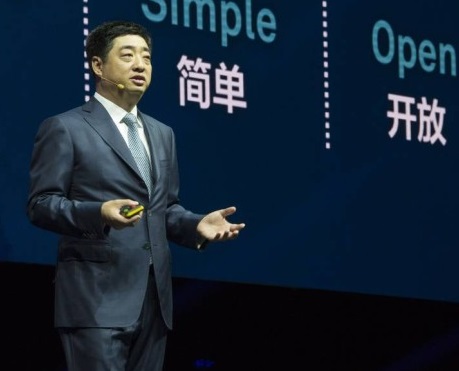 IT as part of the process rather than as management and marketing support
IT as part of the process rather than as management and marketing support Huawei's "Shape the Cloud” event in Shanghai shows how seriously the comms giant is taking the digital transformation issues, betting on widespread IoT and a change in IT buying strategy.

Ken Hu (above), Huawei's rotating CEO, explained that the company aims to position itself as the enabler and driver of an intelligent world. Throughout this process, Huawei aims to become a preferred partner that enables digital and cloud transformation, while actively contributing to the cloud ecosystem through openness, collaboration, and shared success.
Hu says it is vital for enterprises to change their mindsets around the role of ICT: They should start treating ICT as a production system instead of a support system, and proactively use technology to redesign their production processes. Second, enterprises should rethink talent, and equip their employees with basic ICT knowledge, particularly as it applies to cloud technology. Third, enterprises should think big and act small, making headway with tactical, gradual improvements that build lasting confidence in new technology and the success it brings.
"Cloud is changing everything," Hu went on to say. "We view change as a process of rebirth. For any business in the Cloud 2.0 era, change brings hope."
Information and communications technology (ICT) will be the cornerstone of an intelligent world. Ken Hu compared devices to "feelers" that give all things the ability to sense their environments. Networks will connect everything, and the cloud will be the source of intelligence behind all things. These three elements form a synergetic architecture of devices, information pipes, and the cloud, and they are the strategic focus of Huawei's investment in the future.
"Over the next five to ten years," he said, "we will see all kinds of smart devices that automatically adapt to various use scenarios. All people and all things will have the ability to sense their surroundings, and devices will serve as entry points to the intelligent world. Optical and wireless networks will provide ubiquitous, ultra-broadband connections. In the meantime, interconnected computers spread across the planet will aggregate vast amounts of data, forming a 'digital brain' in the cloud. This digital brain will evolve in real time, and it will never age, providing intelligence that can be called upon at any time by people and machines via high-speed connections and devices."
These solutions are highly open and secure, and offer enterprise-grade performance in an integrated one-stop environment, aspects of functionality that are designed in direct response to customer pain points. In addition to individual solutions, it stresses that the cloud ecosystem must be developed around creating value for customers, and that every organization within the ecosystem must contribute its own unique value. Huawei isn't going to release a handful of clouds on its own; as an ecosystem enabler, Huawei aims to help all of its customers build all manner of clouds.
Enterprises that were born in the cloud led the development of the first cloud era, disrupting industries around the world. Hu believes that the next ten years will be the era of Cloud 2.0, marking the rise of countless industry clouds. By 2025, Huawei predicts that all enterprise IT solutions will be cloudified, and more than 85% of enterprise applications will be cloud-based. Every company will integrate its core business with the cloud, and will be on the look-out for the cloud solutions that suit them best.